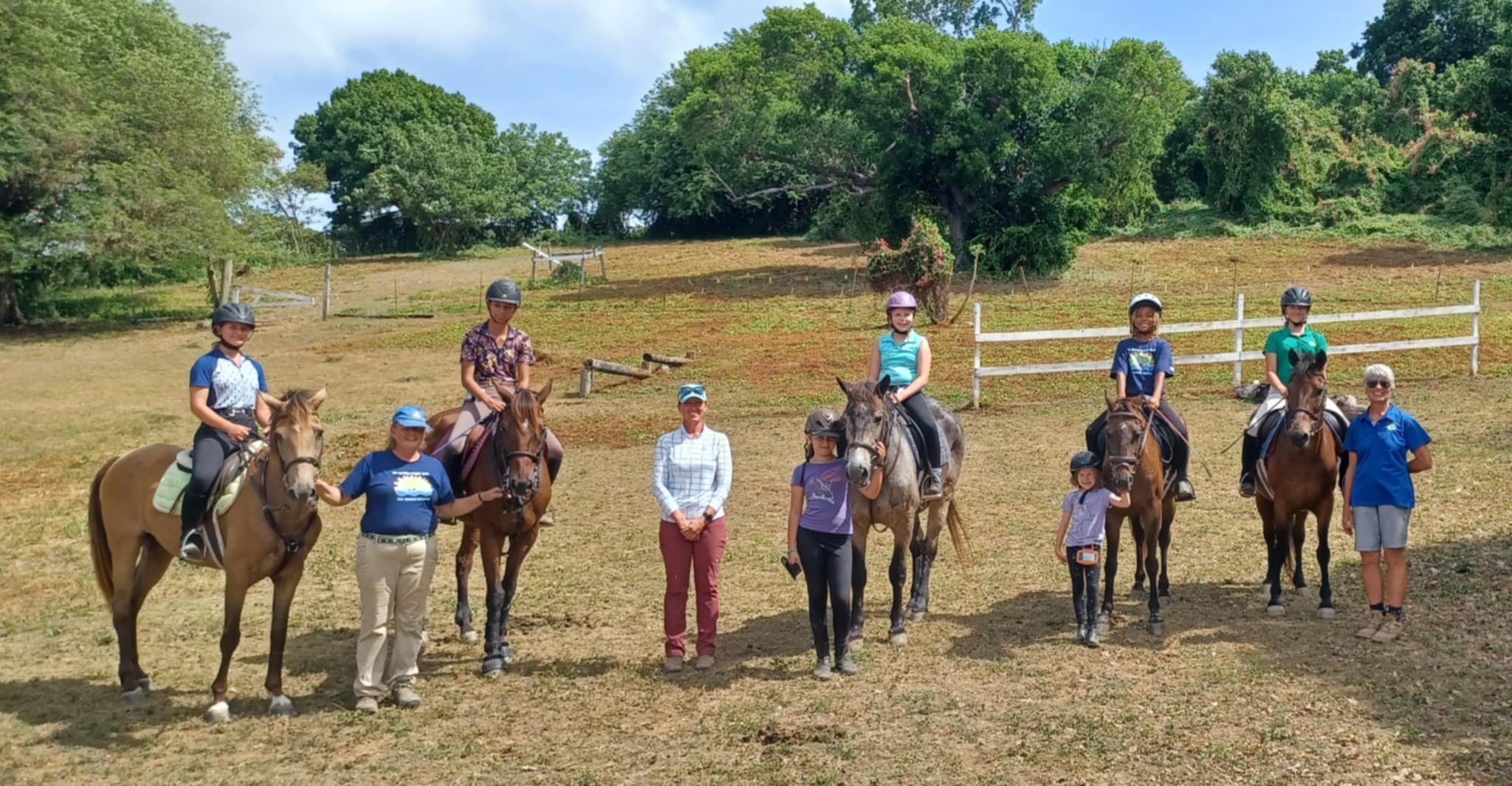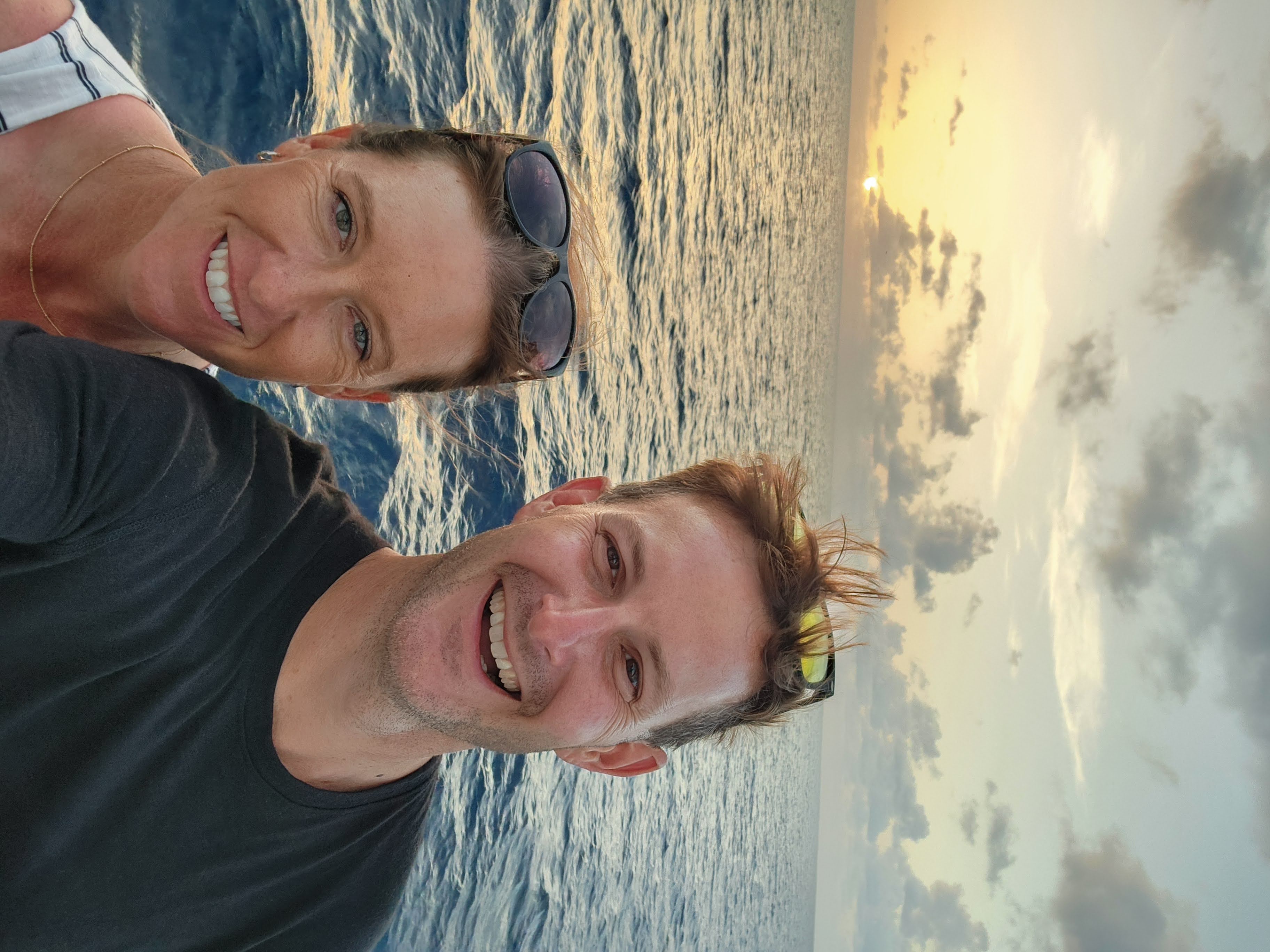
One of the things I love most about being an equestrian clinician is getting to see how people do horses in different parts of the world. Being from the horse friendly east coast of the US, it is easy to lose sight of how relatively easy it is to house and care for a horse here; we have an embarrassment of riches compared to the Cruzan horse community. While you pay more now than ever for it, hay and grain are easy to come by and the sheer amount of choices for these products can be overwhelming at times, farrier and vet care are straightforward to access with an abundance of options, and riding/boarding/competition facilities (despite disappearing at an alarming rate due to development) are still plentiful.
Compare this to horse-keeping in Saint Croix. No hay is grown on the island so it must be shipped in, however, you must be cautious with buying too much volume because you never know when the next hurricane will come and wipe it out. The feed stores can only sell what they receive from the ship, and if your brand of feed doesn’t come in this time you might find yourself having to find the next best alternative. While there is a large animal veterinarian on the island now, for a while the only large animal practitioner was the USDA vet for the US Virgin Islands that traveled between Saint Croix, Saint Thomas, and Saint John, and who saw pet horses as a courtesy. Should you have an emergency, you better hope that she was on your island that day. Having witnessed an equine emergency on my first visit to St Croix I can attest to the hopelessness of the feeling of having such limited options. Even though there is now a fulltime private practice large animal vet, access to medications is not always straightforward and requires jumping through some creative hoops as there are complex laws for having certain drugs shipped to the island even for a DVM.
To do horses in STX takes some serious love and commitment and to see the members of the STX Pony Club do it is inspiring. The club was formed in 1966 and achieved it’s official status with the United States Pony Club in 1967. It is part of the Sunshine Region which includes Florida and the other US Virgin Islands. One of the founding members of the STXPC is Bettye Skeoch who still plays a role in the club today. Bettye is an institution! I have two USPC friends that are the product of the STXPC- Sali Gear and Kelly Smith and it is fun to know that this club has so much history.
The grounds where the club meets and keeps their horses is owned by Becky Merwin, and is called Sprat Hall. The grounds are a stone’s throw from the Caribbean and Rainbow Beach and they are absolutely beautiful.
The first activity I was asked to do on this trip was to act as an examiner for the club’s bi-annual club level certification on Saturday June 14. I would be conducting a D-1 test for two candidates and I was excited to do so since the D-1 is the initial level in USPC’s certification structure and is a no-fail test. Compared to the other certifications where examiners’ ability to coach is limited as well as discouraged, the examiner for the D-1 can offer as much assistance as needed to help the candidate demonstrate the required skills. As a coach and teacher by profession, it is hard to act as an examiner and not to coach! The D-1 is a fun certification because it is so straightforward and it is the first milestone in their USPC journey.
I arrived at the STXPC grounds that morning and conducted the certification. At the end of the test STXPC had two proud newly minted D-1 members! I hope to see them at other certifications over the next few years as they progress.
The main reason for my visit was to act as their guest clinician for their annual summer camp which started on Monday June 16 and ran the entire week, ending on Friday. The current DC (district commissioner) is Rosanne Boyan. Running a pony club is a fulltime job, and running camp is a huge undertaking as well. She was helped by Jane Coles who is the instructor for most of the pony club members. There were seven riders participating and they ranged from kids that had never ridden prior to camp all the way up to C-1 level members. (At the C-1 level members jump a little under 3 feet and are starting to do basic dressage.)
The riders would each receive two mounted lessons daily as well as participate in unmounted horse management sessions and crafts throughout the day. The riders were split into three groups and rode once in the morning and once in the afternoon. Typically the morning sessions were “on the flat” which meant no jumping, and we focused on riding in the dressage arena, learning basic dressage schooling figures and working on establishing correct basic balanced positions that would allow them to better communicate with their horses. The afternoon sessions were jumping lessons for the more advanced riders and for the lower-level riders we added in work over ground poles and learning some mounted games. The game “Around the World” where riders pivot around the horse, kicking their up legs to sit sideways and then backwards before returning to their original position, much like you would see a gymnast do on a pommel-horse proved popular for riders of all levels, and I had to keep an eye on our sole boy rider because if I turned my back to him even for a moment he would be spinning around like a top!
I would teach from about 8:30 until 12 and then we would have a lunch and midday break. Each day a different parent was assigned to bring me a lunch which was nice to enjoy a variety of different meals. Scott would drop me off in the morning and head off on whichever adventure du jour he planned and would pick me up again at lunchtime. We would head back up to the Hilltop House to eat, cool off, and usually take a quick siesta. He would then bring me back to the grounds at Sprat Hall and I would teach the afternoon sessions. A few evenings during the week I was scheduled to teach private lessons to other boarders and riders at Sprat Hall who wanted to take advantage of a guest clinician. Scott would then pick me up at the end of my workday and we would either head out for some beachtime if time and daylight allowed (it got dark about 6:30 PM) or we would go get dinner.
The STXPC had done a wonderful job procuring perquisites for me. They had gotten us gift cards to three restaurants, as well as the sunset catamaran cruise, a BOGO dive pass, and a certificate for renting jet skies at an outfitter at the nearby Rainbow Beach. While we never did take advantage of renting jet skies or the diving (Scott dives but I do not so he did his own thing), we did use everything else and appreciated the generosity of the club as well as the businesses that donated the perks.
Teaching at their camp was incredibly rewarding. Being able to have so many back to back lessons meant that riders rapidly progressed and watching their progression from Monday to Friday was exciting. I was honored to have been asked to come teach and hope that I will have another opportunity to do so in the future!






















